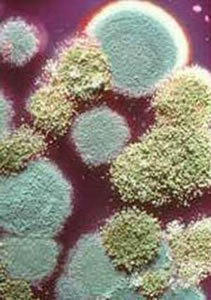 Moisture and resulting microbial growth can be harmful not only to your body, but can also damage the structure of a building, with significant monetary consequences.
Moisture and resulting microbial growth can be harmful not only to your body, but can also damage the structure of a building, with significant monetary consequences.
One of the most common sources of poor indoor air quality, associated with unhealthy buildings, is microbial contamination. Mould spores are both allergens and irritants, producing mycotoxins while bacteria produce endotoxins. Identifying the source, type and degree of contamination of mould organisms is essential in the development of an effective remediation strategy. We employ the latest technology available including laboratory testing.
The single most important factor in the growth and spread of mould and bacteria is water. Our instruments test for moisture in the air and building materials and identify areas of microbial buildup. You will receive a moisture profile of your home to determine if you have a moisture intrusion from external sources or a moisture buildup from the inside of your home due to mechanical reasons (i.e. missing bathroom fans, dryer vents etc.).
We test for:
Fungi, Bacteria, Allergens
- Moulds (spores and metabolites)
- Microbial Volatile Organic Compound (MVOC’s)
- Yeasts and their metabolites
- Bacteria and their metabolites
- Dust mites and other allergens
- Mould specific enzyme activity know as β-N-acetylhexosaminidase, NAHA
- (ATP) Adenosine Tri Phosphate testing
- Mycotoxin testing in buildings and building components
All results are documented in writing and photographically, all laboratory reports are included and the final report is submitted with remediation recommendations. If the damage is extensive we will recommend a mould remediation protocol. We will write a detailed set of instructions how to remove mould safely and the precautions to take in order not to contaminate the rest of the structure. After remediation we will do a follow up testing (known as clean testing).


